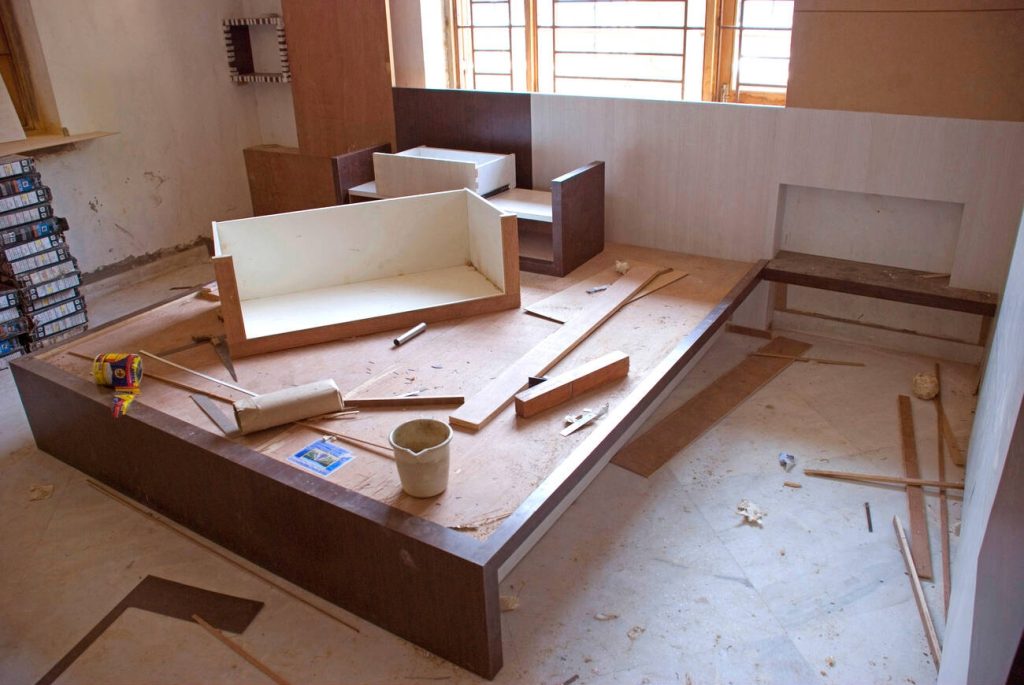Carpentry is more than just hammering nails. It’s about creating something from scratch. Whether it’s building furniture, houses, or intricate designs, carpenters play a big role in shaping our world. They work with wood, one of the oldest building materials, and turn it into something useful and beautiful.
What is Carpentry?
Carpentry involves shaping, cutting, and joining wood. From building simple shelves to complex structures, carpenters use various tools to bring ideas to life. It’s a skill that requires patience, precision, and creativity.
Many think this is all about making things. But it’s more than that. It’s about problem-solving, planning, and working with your hands to create something that lasts.
Different Types of Carpentry
There are various types of carpentry. Each type focuses on a different aspect of building. Here’s a look at some of them:
- Rough Carpentry
Rough carpenters build the basic structure of buildings. They handle framing, roofing, and support beams. It’s not about looks but about making things strong and stable. it is essential for homes and commercial buildings. - Finish Carpentry
Finish carpentry is about the details. This type includes trimming, installing doors, and building cabinets. Finish carpenters work on the small details that make a building look complete. - Cabinet Making
Cabinet makers focus on building furniture and storage. They create kitchen cabinets, bookshelves, and other detailed woodwork. This requires attention to detail and a lot of creativity. - Ship Carpentry
Ship carpenters build and repair wooden ships. This type is rare today but still needed in certain industries. It involves unique skills and knowledge of how wood reacts to water. - Green Carpentry
Green carpenters work with eco-friendly materials. They focus on sustainable building methods. It’s a growing field as more people care about the environment.
Why Carpentry is Important
Carpentry plays a key role in construction. Without carpenters, many of the things we use daily wouldn’t exist. Think about your home. The walls, roof, and floors were likely built by a carpenter. it also impacts other fields, like furniture design, architecture, and even art.
Skilled carpenters are always in demand. As long as people need buildings and furniture, it will remain a valuable skill. It’s not just about creating things; it’s about building a better future.
How to Get Started in Carpentry
If you’re interested in carpentry, the best way to start is by learning the basics. You can begin with simple projects, like building a shelf or a small table. Many schools and community centers offer woodworking classes for beginners.
Learning about this takes time, but it’s rewarding. As you practice, you’ll get better at using tools and working with wood. If you stick with it, you can turn it into a career.
Tools of the Trade
To be a successful carpenter, you need the right tools. Here are some basic tools every carpenter uses:
- Hammer: The most essential tool for driving nails.
- Saw: For cutting wood into the right shape and size.
- Chisels: Used to carve wood and make detailed cuts.
- Measuring Tape: Precision is key in carpentry, so accurate measurements are a must.
- Level: Ensures that your work is perfectly straight.
These tools might seem simple, but using them well takes practice. Each tool serves a specific purpose in carpentry.
Safety in Carpentry
Safety is very important in carpentry. Carpenters work with sharp tools and heavy materials, so they need to stay alert. Here are some key safety tips:
- Wear safety goggles to protect your eyes.
- Use gloves when handling rough or sharp materials.
- Always wear ear protection if you’re using loud machinery.
- Stay focused and never rush through a project.
Safety isn’t just about following rules. It’s about protecting yourself and others while doing the work you love.
The Benefits of Learning Carpentry
Carpentry is a skill that opens many doors. Whether you want to build for fun or pursue it as a career, the possibilities are endless. Here are some benefits of learning carpentry:
- Creativity: Carpentry allows you to bring your ideas to life. You can design and build whatever you imagine.
- Independence: Knowing how to fix or build things yourself saves money and time.
- Career Opportunities: Carpenters are always in demand. You can work in construction, furniture design, or even start your own business.
- Hands-on Learning: it is a hands-on skill. You’ll learn by doing, which makes it both challenging and rewarding.
The Future of Carpentry
The future of carpentry is bright. With advancements in technology, carpenters can now use modern tools like laser levels and 3D modeling software. These innovations make projects easier and more precise.
Green building methods are also becoming more popular. As more people focus on sustainability, carpenters who use eco-friendly materials will be in higher demand.
At the same time, traditional carpentry skills remain valuable. Many people still prefer handmade furniture or custom woodwork over mass-produced items. There will always be a need for skilled carpenters who can bring unique visions to life.
Exploring a Career in Carpentry
IIf you’re thinking about a career in carpentry, it’s important to get experience. You can start by taking classes or working as an apprentice. Many carpenters begin by learning from experienced professionals.
In the USA, carpenters can earn good money, especially those with specialized skills. Plus, you’ll have the satisfaction of building things that people use every day.
It is a versatile, hands-on skill that offers endless possibilities. Whether you’re interested in building homes, crafting furniture, or exploring new eco-friendly methods, this trade has something for everyone.
To learn more and how you can get started, visit SK Group NYC Corp. With dedication and practice, you could turn your passion for building into a rewarding career.

